How to Improve Your Retention Marketing Strategy
A successful retention campaign starts even before your first contact with a customer and continues throughout the lifetime of that relationship. It begins with your reputation, continues with who is talking about your brand, and goes even further as customers dive deeper into your retention marketing experience.
Your retention strategy needs to focus on campaigns for customer engagement, referrals, and loyalty. Each of these channels strengthen the lifetime value of your products.
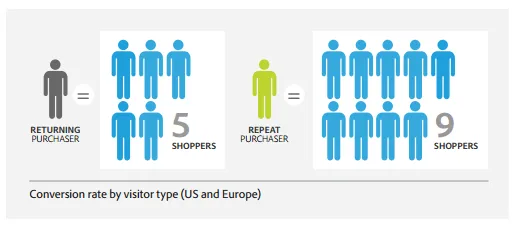
(Source)
Adobe’s research on conversion rates by visitor type has shown that one returning purchaser is worth five shoppers. Similarly, a repeat purchaser is worth nine shoppers. Considering the cost of driving new customer acquisition, investing in customer retention programs is just as profitable as other marketing campaigns.
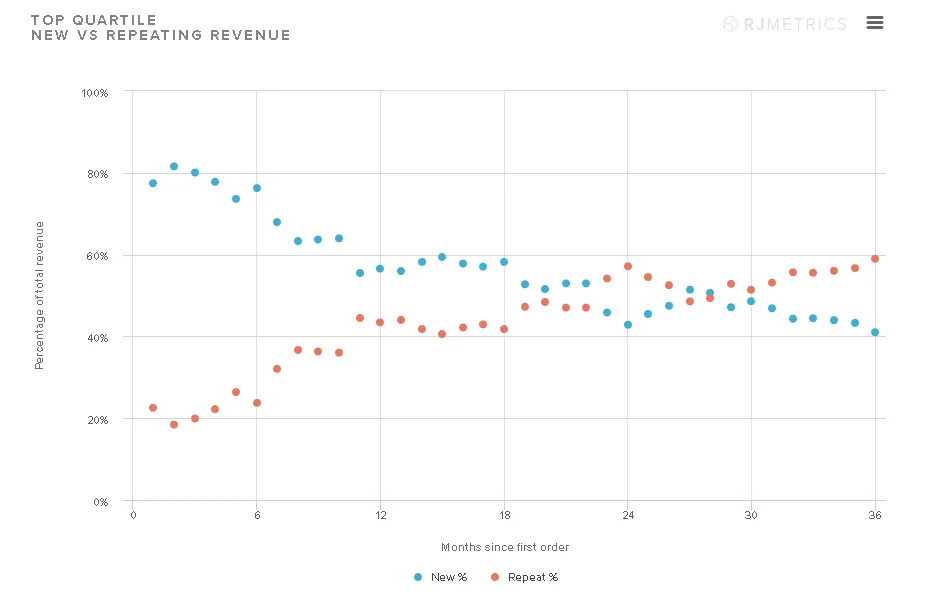 (Source)
(Source)
Furthermore, in this E-Commerce study by RJMetrics they found "In the beginning of a company’s life, almost all of its revenue is coming from new customers, and that gradually converges over time. By two years in, about 50% of revenue is from new customers and 50% is from repeat customers."
Throughout this article we’ll be going over industry examples of customer retention campaigns and will show you how to improve your own retention strategy.
Build momentum with Lifecycle Emails, then engage with Behavioral Emails
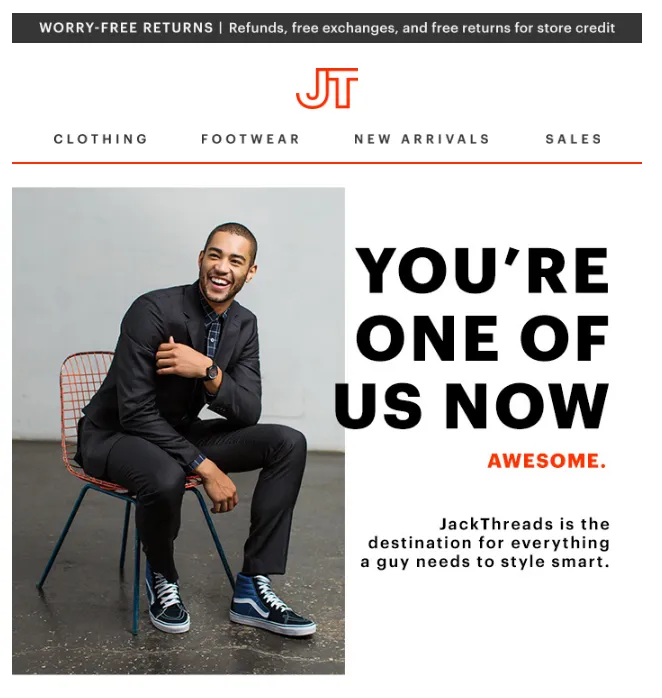
(Source)
Start the relationship with your new customer by saying hello, but don’t stop there. Have a plan for your customer on days one, seven, thirty, and on. Lifecycle emails are a great way to show new clients the ropes. They’re also your opportunity to teach old customers a few new tricks.
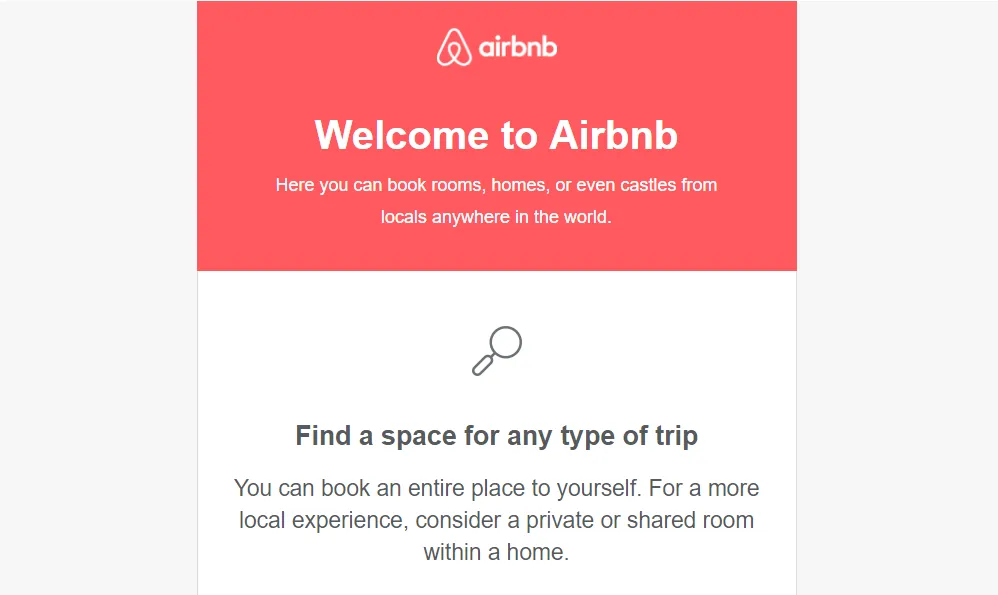
(Source)
Your lifecycle campaigns need to introduce customers to the features they’ll need to be successful with your product.
Campaigns encouraging engagement with your explainer videos, onboarding guides, and reward programs give your new customers options to explore that will drive retention.
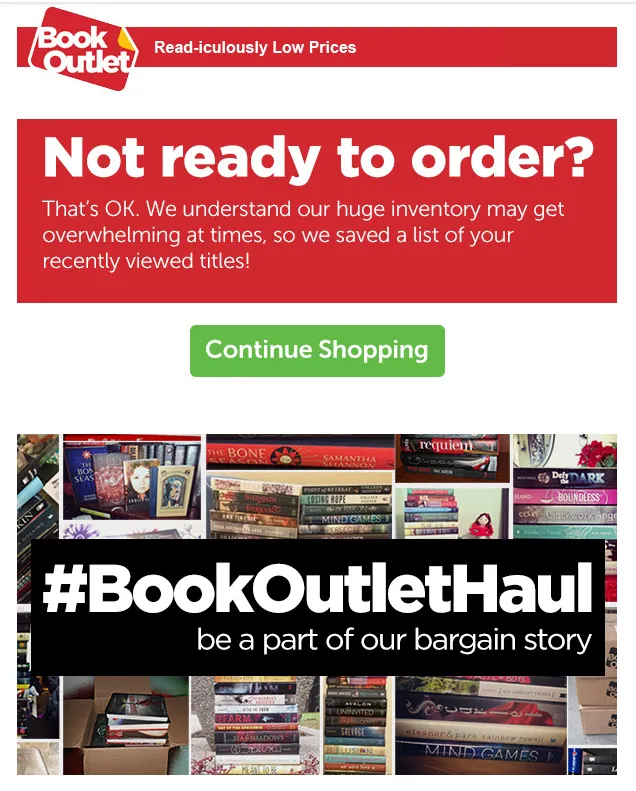
(Source)
The biggest difference between behavioral emails is they’re triggered off of customer actions. App activity, product purchase, email signup. Where lifecycle campaigns are triggered off time intervals. 1 day since X, 3 days since Y or 5 days since Z.
Behavioral email campaigns differ from lifecycle emails in a few ways. Where lifecycle emails typically provide educational content, behavioral emails focus more on engagement and highlighting core features.
By prompting your customers to return to your site or app with a sale, feature addition, or special coupon, it gives you an excuse to reach out and your customer a call to action to return.
Behavioral and lifecycle campaigns are ways that you can take advantage of personalization. Which is the use of customer data to make an email + push notification curtailed to their specific interests. IE Netflix recommending a show similar to others you've watched. Amazon recommending electronics similar to products you've purchased.
Search-friendly Success Centres

(Source)
Few things impact retention more than a frustrated customer. Your first line of defence here comes in two parts: the First Time User Experience (FTUE) and the Onboarding Guide. Simply, the more your clients and customers know about your product, the easier it is for them to be successful.
You may have heard your UI/UX person say “fahtooie.” When they say this, they’re not talking about that new sandwich place downtown, they’re referring to the First Time User Experience (FTUE).
This is your product tutorial and often includes how-to pop ups, scattered helpful hints, and step-by-step instructions. The object here is to help your customer feel like they’re in control while they’re actively being educated about your product or service.
An onboarding guide is similar to and may even be part of your first time user experience. It’s a place where your customer can go to find instructions on how to use your product or service.
These onboarding guides are also smart places to put call to actions directing the user to additional features and prompts to loyalty + referral programs.
What’s the first thing you do when you have a question that isn’t answered on the page you’re on? Google it. Onboarding Guide landing pages and FAQ mentions are indexed and easily found via search engines. For example, any time your customer Googles your product or company name plus a feature, “referral” for example, they’re certain to find your site and answer to their question.
Your customer support team likely already has the tools to put an easy FAQ together if they’re using a CSM solution such as Zendesk or Freshdesk.
Highlight progress with an activity hub
Your customer’s success is your success. An activity hub is a place for your customer to visit to see their usage metrics that shine a light on their positive actions within your product or app.
Wearables and other smart products such as fitness trackers often have apps or pages that display a variety of metrics. In both cases, the activity hub highlights actions that the customer has taken and loops them around to show product value.
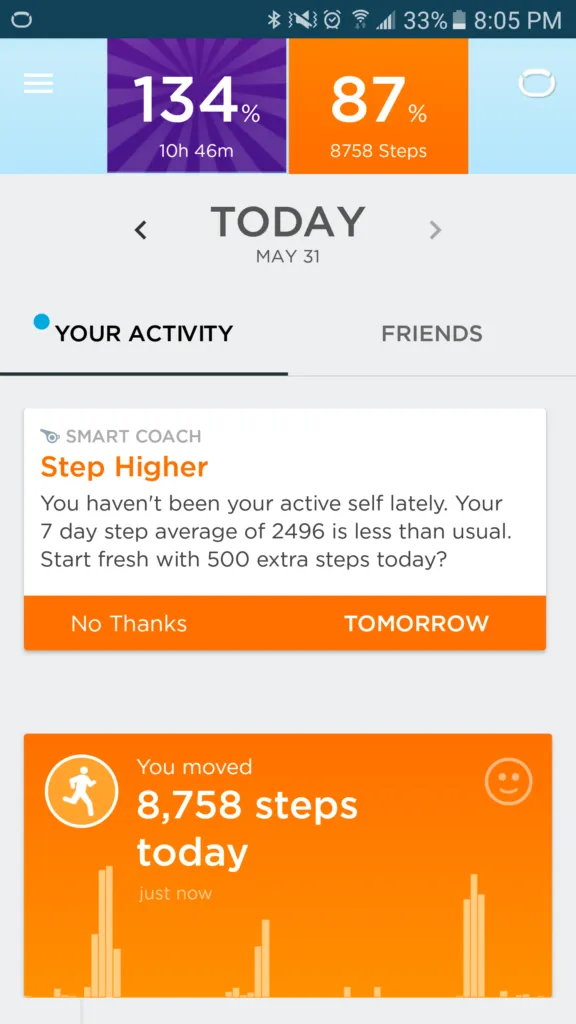
(Source)
Companies tightly integrate product onboarding into their activity hubs as this is a high-traffic area in their products. Placing prompts to loyalty + referral programs and detailed product how-to guides.
Put your finger on the pulse with Net Promoter Score
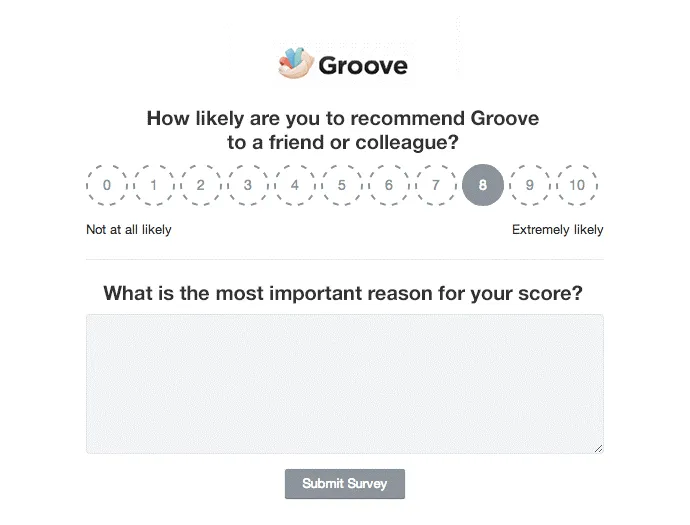
(Source)
Getting a sense of customer sentiment can be a tricky business. Lengthy surveys can confuse users and small groups of vocal enthusiasts can mask larger packs of dissatisfied customers.
Net Promoter Score surveys, NPS for short, are simple two question survey:
The first is a 1 to 10 rating scale asking “How likely is it that you would recommend our company to a friend or colleague?”
This question is followed by an open ended “What is the most important reason for your score?” which allows the user to provide specific feedback about what is working, not working, and desired.
Why ask a Net Promoter Score survey? It gives you a bird’s eye view of customer sentiment while engaging customers.
By bucketing your customers into core groups of promoters, passives and detractors. You can schedule follow up campaigns and customer interviews to improve your scores. A follow up with a personalized offer or coupon makes for a nice “thank you” for your promoters. This a great way to catch the attention of influencers and to enhance the customer-brand relationship.
Which highlights the value of retention marketing campaigns. Did your customer have a mediocre experience? Follow up and see what they think can make your program shine. Here’s your chance to give these users a voice.
Negative feedback can be easy to dismiss, but often these are the users who you should pay the most attention to. It’s here that you can find out what really isn’t working about your program.
Are they frustrated by unclear messaging? Did they hit a bug? Perhaps they missed out on a time-sensitive offer? These are problems that you or your customer support team can address and turn around to give a better customer experience.
Learn more about Net Promoter Score in our comprehensive guide.
Be social with Brand Advocates
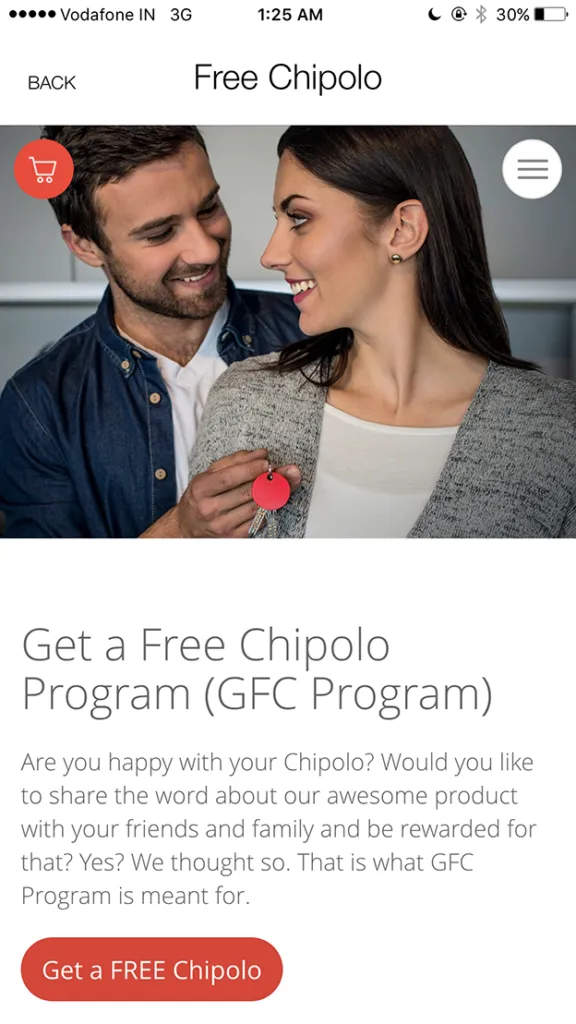
Nothing sells like word of mouth. Your marketing team can do an amazing job putting your brand and product out into the world, but a testimonial from someone a potential client trusts... that’s gold.
With the rise of social media, influencer marketing is one of the most important ways to get your service in front of customers. Brand advocates will create free content, spread the word about your product, and almost certainly be a top user of your referral program. But how do you create brand advocates from influencers?
Reach out. Influencers love being VIPs. Engaging them by their social media channel of choice shows that you’re listening and in turn builds their reputation. If they’re local, bring them in for a tour and a chat. More distant influencers would love to have you as a special guest on their podcast or blog. Giving them these opportunities helps them build brand-positive content for their social media and makes you a friend for life.
Create FAQs. A link to a breakdown of your referral program gives influencers something to share and your customer support team a handy reference to send out. This also allows you to stay on top of any mistakenly spread misinformation by having easily-searchable answers available.
Be active on social media. Creating engaging, shareable content not only attracts customers, it also makes you more interesting in the eyes of influencers.